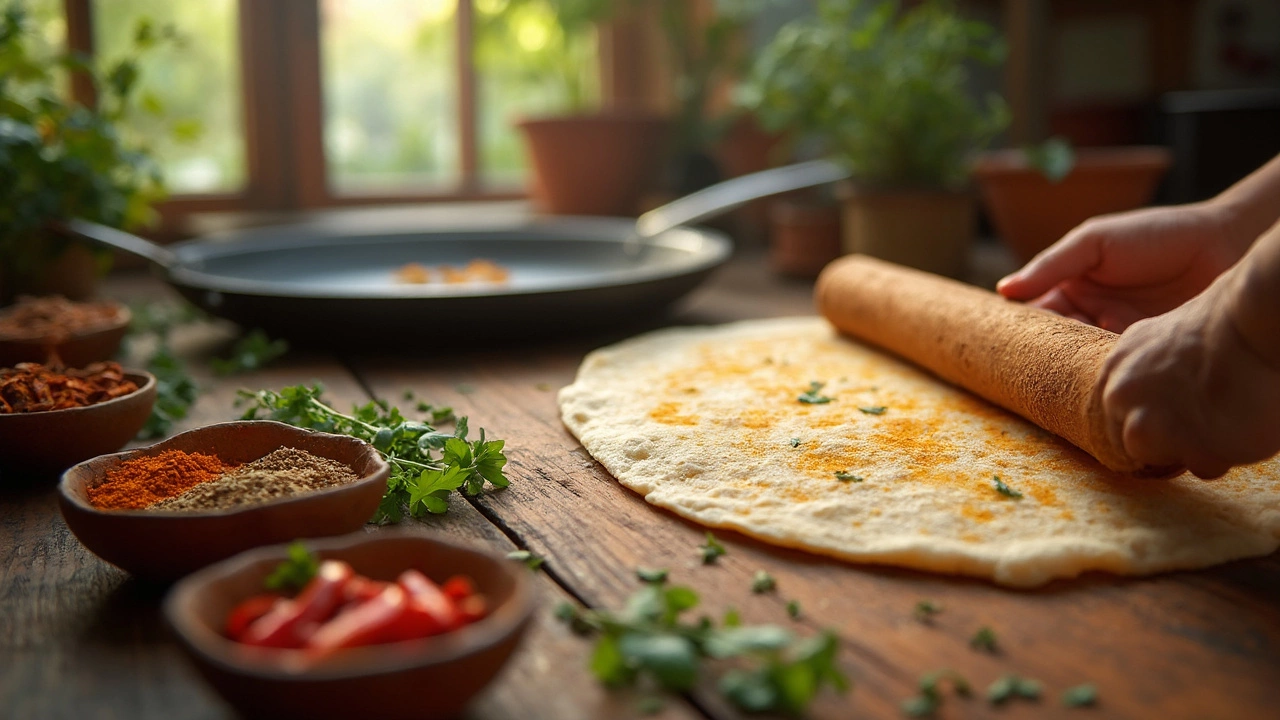Roti vs. Bread: Understanding the Key Differences
When comparing Roti vs. Bread, a side‑by‑side look at traditional Indian roti and common Western breads, covering ingredients, technique, and nutrition. Also known as Roti and Bread showdown, this comparison helps home cooks choose the right flatbread for any meal. It encompasses ingredient differences, highlights how cooking method influences texture, and shows why nutrition varies between the two.
First, let’s define the star players. Roti, a simple, unleavened flatbread made from whole‑wheat flour, water, and sometimes a dash of oil is cooked on a hot tawa and often puffs up with steam. In contrast, Bread, a leavened product that may use yeast, baking powder, or baking soda to rise, and is typically baked in an oven comes in many shapes—from soft loaves to crusty baguettes. The core distinction is that roti relies on quick, direct heat, while most breads depend on prolonged oven baking.
Why does that matter? The heat source determines gluten development. Roti requires high‑heat cooking to gelatinize starches instantly, giving a soft yet sturdy bite. Bread influences gluten strands through fermentation, which creates airy crumb and a crusty exterior. These processes also affect digestibility: roti’s short cooking time preserves more nutrients from the whole wheat, whereas bread’s longer bake can reduce certain heat‑sensitive vitamins but improve shelf life.
Practical Factors: Baking Powder, Baking Soda, and Oil
Many home cooks wonder if adding Baking powder, a chemical leavening agent that releases carbon dioxide when moistened and heated can make rotis softer. The answer is nuanced: a pinch can lighten the texture, but too much turns the roti cake‑like and masks its traditional flavor. The same principle applies to Oil in dough, fat that tenderizes gluten and adds richness. Adding oil at the right stage—usually after kneading—yields a pliable dough that rolls out without tearing and puffs nicely on the tawa.
For bread, baking powder and baking soda are more common in quick‑bread recipes, while yeast dominates leavened loaves. Understanding when to use each leavener can prevent flat, dense results. For instance, a quick‑bread version of naan might employ baking soda plus an acidic ingredient like yogurt to create lift without yeast. Conversely, a classic whole‑wheat loaf benefits from a slow rise, allowing flavor development and a chewy crumb.
Nutrition-wise, both roti and bread can be part of a balanced diet, but the choice of flour and additives matters. Whole‑wheat roti offers higher fiber and micronutrients compared to white bread made from refined flour. However, adding seeds, nuts, or whole grains to bread can boost its nutrient profile to match or exceed roti’s benefits. The key is to read labels and understand what’s inside each dough.
Cooking technique also impacts the end result. A well‑heated tawa (or skillet) ensures the roti cooks within a minute, creating those signature brown spots and occasional puff. If the pan is too cool, the roti stays soft and won’t puff. With bread, oven temperature and steam injection dictate crust formation; a hot oven with a splash of water produces a crisp crust, while a lower temperature yields a softer loaf.
Across the Indian subcontinent, regional variations add flavor to the debate. In North India, rotis often include a bit of ghee, while in the South, they may be made with rice flour for a lighter bite. Meanwhile, Western breads vary from sourdough’s tang to the subtle sweetness of brioche. Each style brings its own texture, taste, and cultural story.
Finally, think about storage and reuse. Rotis are best enjoyed fresh, but they can be reheated on a dry skillet or turned into crispy chips. Bread stores longer, especially if sliced and frozen, making it handy for quick meals. Knowing how each flatbread behaves after cooking helps you plan meals efficiently.
Below you’ll find a curated set of articles that dive deeper into the specifics—troubleshooting roti puffing, mastering soft chapatis, using baking soda in roti, and more. Whether you’re a beginner looking to perfect your first roti or a seasoned baker curious about hybrid recipes, the collection offers practical tips you can apply right away.

Roti vs. White Bread: Choosing the Better Carb
Roti and white bread are both staple foods enjoyed worldwide, but when it comes to health, which is the better choice? While roti offers potential health benefits like lower calories and higher fiber content, white bread is convenient and widely available. This article explores the nutritional differences, providing practical tips for incorporating healthier carbs into your diet. Discover whether roti or white bread fits best into your healthy lifestyle.